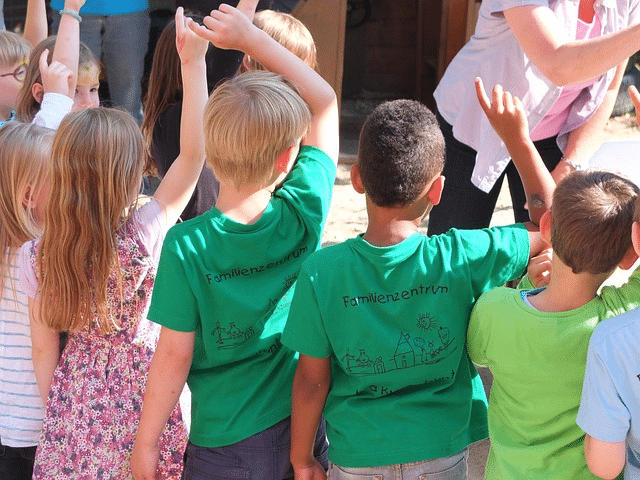As societies continue to evolve and families increasingly need to juggle work and child-rearing responsibilities, the use of daycare services has become more of a necessity than a choice for many. This raises a critical question that has been a topic of contention among researchers, educators, and parents: How long is “too long” for a child to spend time in daycare? To answer this question, we must consider multiple factors including the child’s age, individual temperament, and the quality of care provided 1.
1. Age Consideration
The age of the child can significantly impact how they experience and respond to long hours in daycare. Infants and toddlers require more direct care, including feeding, changing, and personal interaction. For them, extended hours at daycare may lead to stress, anxiety, and fatigue, especially if the extended care environment is not nurturing enough 2.
For preschool and school-age children, the length of stay at a daycare center often correlates with their school schedules. Research suggests that they can handle longer hours as long as there are ample opportunities for active learning, play, and rest 3.
2. Individual Temperament
Every child’s development is unique. Some kids adapt to social environments and routines more easily than others. Children with easygoing temperaments may handle longer daycare hours better than those who are more introverted or sensitive 4. It is essential for parents and caregivers to observe how a child responds to daycare and adjust the duration based on the child’s comfort and happiness.
3. Quality of Care

Quality trumps quantity when it comes to hours spent in daycare. High-quality daycare environments provide stimulating and nurturing experiences that promote children’s physical, cognitive, and emotional development. A child spending fewer hours a day in a high-quality daycare may benefit more than a child spending long hours in a lower-quality setting 5.
Quality markers include a low child-to-staff ratio, trained and experienced staff, a safe and clean environment, and a curriculum that includes a balance of structured activities and free play.
4. Parent-Child Interaction
Research shows that the quality of parent-child interactions also significantly affects the child’s response to hours spent in daycare. High-quality parent-child interactions can mitigate potential negative effects of long daycare hours 6. A parent’s active involvement in many hours of a child’s life, including talking, reading, playing, and providing emotional support, is crucial.
5. Potential Outcomes of Long Hours in Daycare
A study conducted by the National Institute of Child Health and Human Development (NICHD) showed that children spending more than 30 hours a week in daycare might exhibit more behavioral problems than those spending less time. However, this was more pronounced in lower-quality care settings and less so when parent-child interactions were high-quality 7.
6. The Optimal Duration at Daycare
While there is no universally agreed-upon “optimal” number of hours or duration for a child’s stay at daycare, most professionals suggest a range of 20-30 hours per week for children under five. This duration allows ample time for children to enjoy the social and learning benefits of daycare while still providing plenty of opportunities for parent-child interaction 8.
Conclusion
In conclusion, how long is “too long” at childcare depends on various factors. Each family must evaluate their child’s age, individual temperament, and the quality of daycare while considering their work schedules and the quality of their own time spent with the child. As always, children’s happiness and well-being should be the guiding principle that parents work towards in making these decisions.
References
- Ahnert, L., Pinquart, M., & Lamb, M. E. (2013). Security of children’s relationships with nonparental care providers: A meta-analysis. Child Development, 74(3), 664-679.
- Loeb, S., Bridges, M., Bassok, D., Fuller, B., & Rumberger, R. W. (2007). How much is too much? The influence of preschool centers on children’s social and cognitive development. Economics of Education Review, 26(1), 52-66.
- McCartney, K., Dearing, E., Taylor, B. A., & Bub, K. L. (2010). Quality childcare supports the achievement of low-income children: Direct and indirect pathways through caregiving and the home environment. Journal of Applied Developmental Psychology, 28(5-6), 411-426.
- Crockenberg, S., & Leerkes, E. (2004). Infant and maternal behaviors regulate infant reactivity to novelty at 6 months. Developmental Psychology, 40(6), 1123.
- NICHD Early Childcare Research Network. (2002). Early childcare and children’s development prior to school entry: Results from the NICHD Study of Early Childcare. American Educational Research Journal, 39(1), 133-164.
- Vandell, D. L., Belsky, J., Burchinal, M., Steinberg, L., & Vandergrift, N. (2010). Do effects of early child care extend to age 15 years? Child Development, 81(3), 737-756.
- NICHD Early Child Care Research Network. (2003). Does amount of time spent in child care predict socioemotional adjustment during the transition to kindergarten? Child Development, 74(4), 976-1005.
- Brooks-Gunn, J., Han, W. J., & Waldfogel, J. (2010). First-year maternal employment and child development in the first seven years. Monographs of the Society for Research in Child Development, 75(2), 7-9.

